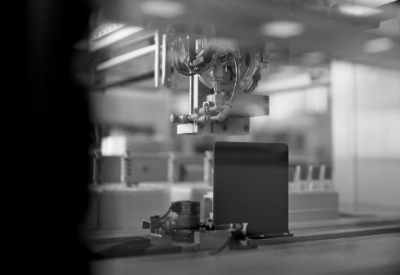
Traditional electrochemical battery cells do not perform optimally when exposed to higher temperatures. Understanding how heat affects a battery can prevent serious issues or malfunctions with your devices.
New innovations, such as betavoltaic power cells and radioisotope thermoelectric generators, can maintain a steady output when exposed to extreme temperatures. City Labs is constantly working to develop better batteries that operate within a wider range of temperatures.
Do Batteries Exposed to Heat Lose Function?
In some ways, traditional batteries exposed to heat gain functionality. They charge much faster at higher temperatures than at low ones. Unfortunately, this usually hurts more than it helps.
Most batteries have specific limits on how hot they can get before they experience issues. If they remain within these boundaries, the impact of the heat can be negligible or temporary. Batteries in heat may increase output for a short period of time, but a decrease in temperature may later equalize their overall lifespan.
How Does Heat Affect Battery Life?
Traditional batteries power devices with chemical reactions. Lead-acid batteries and lithium-ion batteries require a stable environment to perform at expected levels. Some batteries are specifically designed for high-heat applications, but they may not be as efficient as normal products.
High temperature lithium-ion batteries and lead-acid batteries can perform well until they reach their limit. The most common ways that heat affects battery life are by decreasing the lifespan and causing unexpected failure.
Shorter Lifespan
As chemical reaction rates are directly related to temperatures, the hotter it gets, the faster batteries will charge and discharge. While it may seem that your battery is working better at that moment, it’s also working significantly harder. This unrestricted energy output can lead the battery to die faster.
Think of it this way, if a battery can discharge 1,000 watts at 100 watts per year, the battery will last approximately 10 years. When it gets hotter, the rate will speed up. If it doubles, the battery will discharge 1,000 watts at 200 watts per year, meaning the battery will only last around 5 years. Depending on the temperature, electrochemical batteries experience a significant change in their output and lifespan.
Batteries that are not frequently in use are at an even higher risk. If a battery is stored in a hot location, it should be load tested before being used.
Irreversible Damage
Lifespan is a factor when the battery can withstand the heat. Poorly manufactured batteries may not be able to sustain the increased discharge rate caused by high heat and could be permanently damaged. Parts of the battery could melt, fuse together, or warp in a way that ruins the load capacity.
Especially if a battery is not prepared for the accelerated rate of high heat, the lifespan could shorten significantly as a result of overcharge or thermal runaway.
Thermal runaway is a chain reaction that occurs in battery cells and can be difficult to stop. It can lead to damage, battery acid leaks, or even explosions. An overheating battery can be dangerous to those around it as well to itself.
City Labs’ NanoTritium™ Batteries Can Withstand Extreme Heat
The evolution of technology and the influx of microelectronic devices in extreme environments call for a power supply that can withstand high temperatures. City Labs has designed and developed a series of low-power betavoltaic batteries that harness radioactive decay. By converting kinetic energy from the breakdown of beta particles, our batteries can charge a secondary power storage for more than 20 years.
Our NanoTritium™ Betavoltaic Batteries do not use chemical reactions and continue to function until exposed to much more intense heat. These batteries are reliable and predictable for the entirety of their lifespan.
Powering Microelectronics in High Temperatures
Microelectronic devices have become a necessity for exploration and observation. Power sensors, semiconductors, switches, and more are included on complex machines that must work in extreme environments.
Some devices must be placed within machines that reach dangerously high temperatures for monitoring purposes. If the components are not reliable and durable, it can lead to misinformation in an emergency. There must be a guarantee that a battery will not fail you when you need it most.
Additionally, some of these locations can be difficult to reach. Replacing batteries inside a large, complex machine is a major inconvenience. It can take significant resources to access remote locations where repairs need to be made.
City Labs’ products address these issues simultaneously. Our battery will not fail when it’s performing is imperative.
If this sounds like a technology that interests you or could be of use to your efforts, reach out to schedule a meeting with our team.
The Nuclear Battery Company With a Vision
Ready to power your next innovation or learn more about our technology?
Contact Us Today




